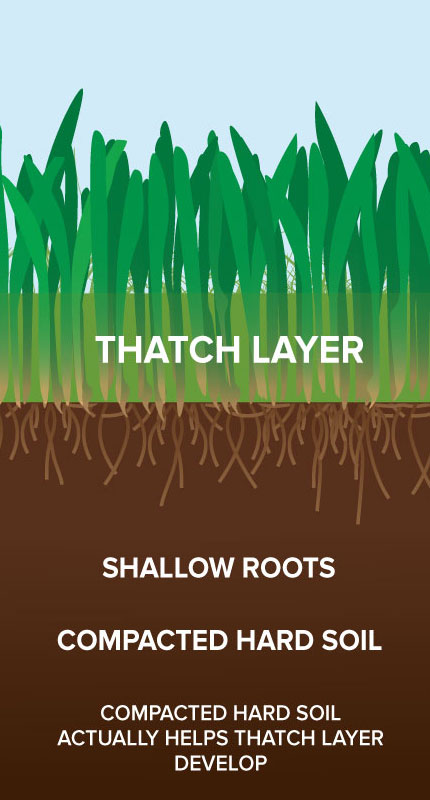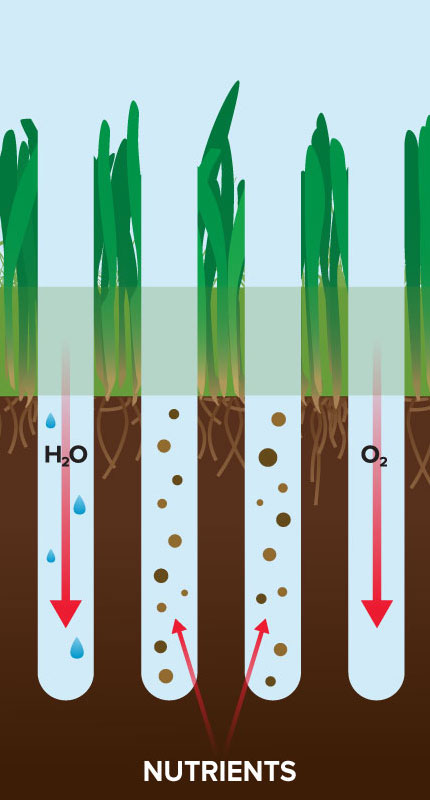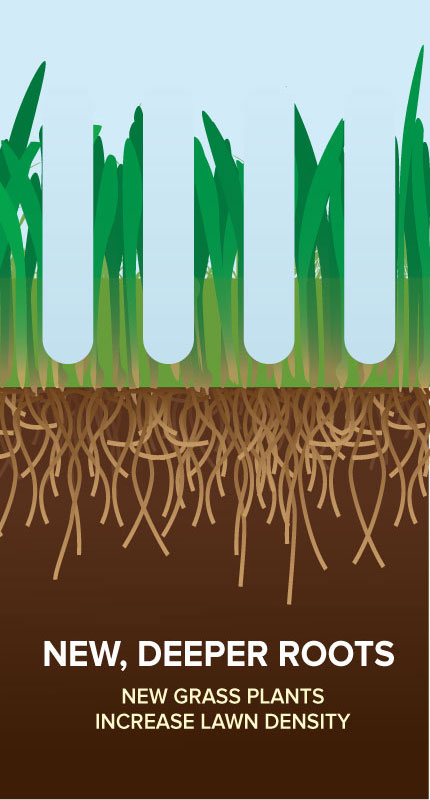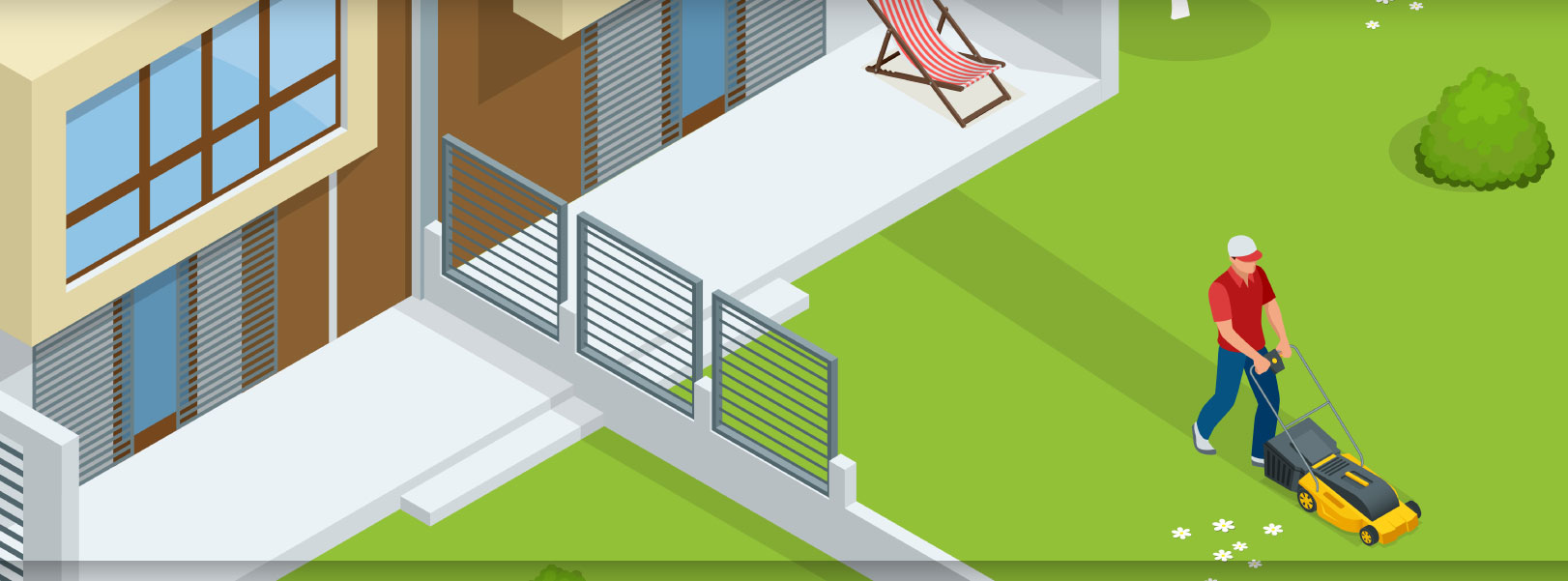Soil that is prone to compaction, such as St. George’s clay-based soil, will be in need of aeration and power raking. This allows greater water, sunlight, and nutrient penetration, but must not be overdone.



General Tips
De-thatching should only be done when the thatch (dead grass layer between grass crown and soil) is taller than ½ inch. To check your thatch layer, use a lawn core sample tool.
There are pros and cons to aeration and power raking, and even times where both are appropriate. First, the types and definitions are:
- Solid tine aeration – Done either by machine or hand garden tool, this form of aeration pokes holes in the soil but does not remove any core plugs. While this is less stressful for the lawn, it can be less effective than core aeration and actually compact the soil more.
- Core aeration – This type of aeration removes a plug of soil from your lawn. It is recommended to do this when the ground is moist and to leave the removed plugs on the lawn. That way they can disintegrate back into the soil and return the nutrients.
- Power raking – Slices the grass to remove thatch. This can be done with a rake, but is more commonly done by machine.
You can follow up a core aeration by power raking, allowing the plug to be broken up and more easily re-absorbed by the lawn. This will all depend on how compact your soil is. We recommend you do this lawn maintenance during the fall months of October and November. After it’s taken place, be sure to amend the soil (checking the pH) and re-seed. Do not do this during the first year after your lawn is installed. This type of lawn maintenance is best after your lawn has had a year to mature. Aeration and power raking should be done every year or at the least, on an as-needed basis.
Common Aeration & Power Raking Mistakes
- Power raking or aerating timing – Both of these activities stress the lawn and should be done no more than once a year. Fescues should be aerated and/or power raked in the early fall.
- Removing core aeration plugs – This will thin the soil in your lawn over time and can create uneven pockets over the years. Allow the plugs to stay on your lawn. They will be re-absorbed by the soil.
- Using the wrong tool – If the layer of thatch is very thick, core aeration will be more effective than power raking. Less stress will be caused to the lawn by doing only core aeration than by combining these two methods
- Setting blades too low – Make sure your power raker’s blades are set high enough that they aren’t hitting soil as you go. It should be pulling up dead grass only.




